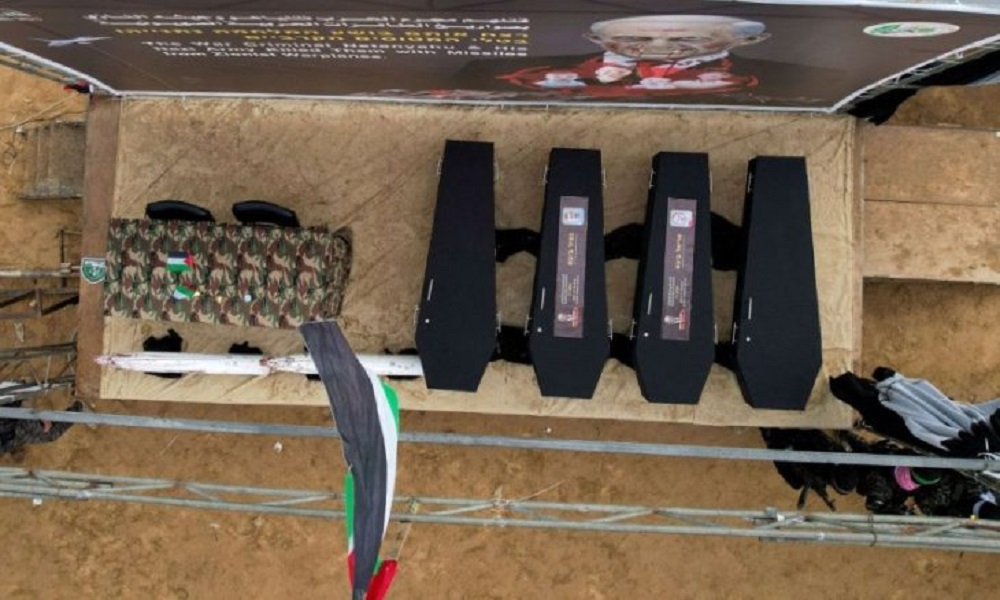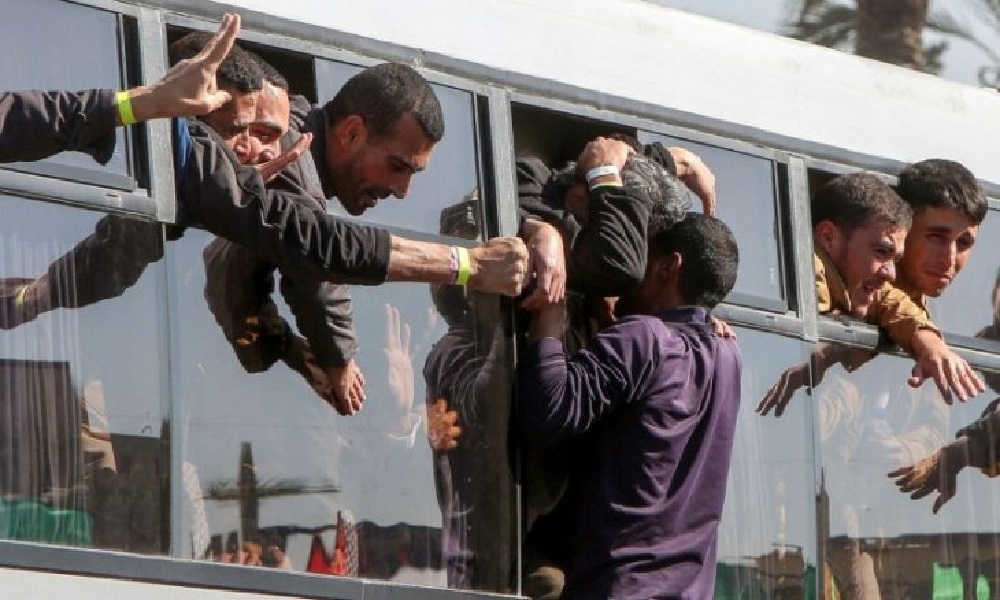Hamas to Release Remains of Four Israeli Captives in Final Prisoner Exchange Phase
The handover comes as part of the last batch in the first phase of the Gaza ceasefire and prisoner swap agreement.

Watan-The military wing of Hamas, Al-Qassam Brigades, announced on Wednesday the names of four Israeli captives whose remains are set to be released tonight.
This release is part of the eighth and final batch of the first phase of the ceasefire and prisoner exchange agreement.
In a statement, Al-Qassam spokesman Abu Ubaida said, “Tonight, the Brigades have decided to hand over the remains of four Zionist captives: Yitzhak Idan, Itzik Hajrit, Ohad Yahlomi, and Shlomo Mansour.”
“Without Ceremonies”
Israeli Prime Minister Benjamin Netanyahu stated on Wednesday evening that Tel Aviv will receive the remains of its four captives in Gaza without “ceremonies,” according to a statement released by his office.
According to Israel’s Channel 12, the statement said: “Following Israel’s demands, an agreement was reached with mediators to return our four abductees tonight as part of the first phase of the deal, following an agreed-upon procedure and without Hamas celebrations.”
As of 16:06 GMT, Hamas had not issued a response to Netanyahu’s statement.

releases this night
Release of Palestinian Prisoners
The Hamas-affiliated Prisoners’ Media Office expected the delayed release of prisoners from the seventh batch to take place on Wednesday evening at the European Gaza Hospital in Khan Yunis, southern Gaza.
A statement from the office confirmed that preparations at the hospital were underway to receive the freed prisoners, who were expected to arrive between 10:00 PM and midnight.
The first phase of the ceasefire agreement in Gaza began on January 19, 2025. It consists of three stages, each lasting 42 days, with negotiations for the next phase required before completing the ongoing one.
This phase stipulated the release of 33 Israeli captives, both living and deceased. Palestinian factions have already freed 25 living captives and four bodies in seven batches, in exchange for Israel releasing 1,135 Palestinian detainees, including dozens serving life sentences.
However, last Saturday, Prime Minister Netanyahu blocked the release of about 620 Palestinian prisoners who were scheduled to be freed in the seventh batch, despite Hamas fulfilling its commitments under the agreement.
On Tuesday evening, during a visit by its delegation to Cairo, Hamas announced that a resolution had been reached to end the delay. The remaining 620 Palestinian prisoners from the seventh batch would be released simultaneously with the handover of the four Israeli remains in the eighth batch, along with an additional number of Palestinian women and children detainees, though no exact figure was specified.

Ongoing Delays in Second-Phase Negotiations
Israel estimates that 62 Israeli captives remain in Gaza (both living and deceased), while it continues to detain thousands of Palestinians under conditions of torture, starvation, and medical neglect, leading to numerous deaths, according to Palestinian and Israeli media and human rights reports.
Meanwhile, Netanyahu continues to stall negotiations for the second phase of the agreement, which was supposed to begin on February 3.
Israeli media reports indicate that Netanyahu has promised the Religious Zionism party, led by Finance Minister Bezalel Smotrich, that he will not proceed to the second phase of the Gaza ceasefire deal in order to keep them in the governing coalition and prevent its collapse.
The second phase of the agreement stipulates an end to Israel’s war on Gaza and the full withdrawal of its military from the territory.
Between October 7, 2023, and January 19, 2025, Israel, with U.S. support, carried out what has been described as a genocide in Gaza, resulting in over 160,000 Palestinian casualties, including the deaths and injuries of mostly women and children, as well as more than 14,000 missing persons.






